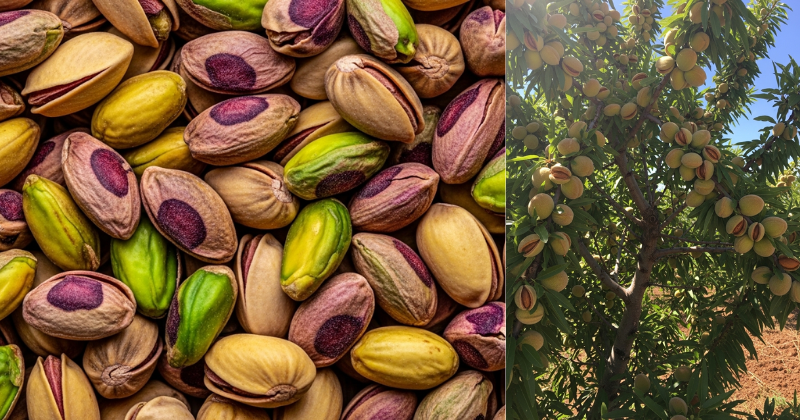Learn how to plant pistachio trees step-by-step and grow your own thriving pistachio orchard with this beginner-friendly, comprehensive guide.
Planting pistachio trees is one of those rewarding gardening adventures that connect you deeply with nature while giving you the satisfaction of nurturing a long-lasting, fruitful tree. Whether you’re dreaming of a small backyard harvest or planning to build a mini orchard, learning how to plant pistachio trees opens the door to years of delicious, home-grown nuts and a beautiful landscape. In this complete guide, you’ll discover everything you need—from choosing the right varieties to mastering planting techniques and long-term care. By the end, you’ll feel confident, excited, and fully equipped to grow pistachios successfully, even if you’re a total beginner.

Understanding Pistachio Basics: What You Need to Know Before Planting
Growing pistachio trees may sound intimidating, but when you understand their basic needs, the process becomes surprisingly simple. These trees are hardy, resilient, and thrive in the right environment. Let’s break down the essentials so you start with confidence.
Climate Requirements
Pistachios love contrast. They need:
- Hot, dry summers
- Cold winters with 800–1,500 chilling hours
- Low humidity, which reduces disease pressure
If you live in a Mediterranean climate, arid region, or desert-like area, you’re already ahead.
Soil Needs
Healthy pistachio growth begins with the right soil:
- Deep, well-draining soil
- Sandy loam or loamy texture
- pH between 7.0 and 8.0
- Avoid clay-heavy soil that traps water
Male and Female Trees
This part is crucial:
Pistachios are dioecious, meaning:
- One tree produces male flowers
- Another produces female flowers
You need one male for every 8–10 female trees for proper pollination.
How to Plant Pistachio Trees: Step-by-Step Guide
This is the heart of your planting journey. Follow these steps and you’ll set your trees up for long-term success.
Step 1: Choose the Right Variety
Common varieties include:
- Kerman (most popular female variety)
- Peters (classic male variety)
- Golden Hills
- Lost Hills
Choose varieties suited to your local climate.
Step 2: Prepare the Soil
Start preparing at least a few weeks before planting:
- Clear weeds and debris.
- Loosen soil to a depth of 60–75 cm.
- Mix in organic matter only if soil is too sandy (pistachios don’t like rich soil).
Step 3: Dig the Planting Hole
Make a hole:
- Twice as wide as the root ball
- As deep as the root ball (don’t plant too deep)
Step 4: Plant the Tree
- Place the tree gently in the hole.
- Keep the graft union above soil level.
- Backfill with the native soil.
- Water deeply to settle the roots.
Step 5: Stake if Necessary
Young pistachio trees may need light support.
Use a flexible tie and avoid tying too tightly to the trunk.
Step 6: Water Properly
Pistachios are drought tolerant after establishment.
For the first year:
- Water deeply every 10–14 days.
- Avoid overwatering—wet soil leads to root rot.
Advanced Pistachio Growing Tips for Bigger Harvests
Once your trees are established, you can take your garden to the next level with these expert-level strategies.
Pruning for Structure and Productivity
Prune during winter to:
- Create an open canopy
- Improve air flow
- Encourage strong branch formation
A well-shaped tree produces higher yields.
Fertilization Strategy
Pistachios don’t need heavy feeding.
Use:
- Light nitrogen in spring
- Zinc supplements if leaves show deficiency
A soil test will guide your exact needs.
Irrigation Mastery
Pistachio nuts fill during late summer.
Provide deep watering in this period for better nut size and flavor.
Troubleshooting Common Pistachio Planting Problems
Even with care, you may face a few challenges. Don’t worry—here’s how to handle them with confidence.
Yellow Leaves
Possible causes:
- Overwatering
- Poor drainage
- Zinc or iron deficiency
Fix: Improve drainage, reduce irrigation, or apply micronutrients.
Poor Pollination
If nuts are empty or yield is low:
- Make sure male and female trees bloom at the same time
- Prune male trees to encourage more pollen
Pests and Diseases
Watch for:
- Navel orange worms
- Aphids
- Verticillium wilt
Prevention:
- Keep the orchard clean
- Maintain dry soil surface
- Use organic oils for aphids
Long-Term Pistachio Tree Care: Maximize Your Results
Here’s how to transform your trees into long-term producers:
Seasonal Care
Spring:
- Check budding
- Apply light fertilizer
Summer:
- Deep watering
- Pest control
Fall:
- Harvest nuts as hulls split
- Remove fallen debris
Winter:
- Prune
- Reduce watering
Companion Planting
Good companions include:
- Lavender
- Rosemary
- Sage
These attract beneficial insects and improve soil health.
Expanding Your Orchard
If you fall in love with growing pistachios, expand by:
- Propagating rootstock
- Adding more female trees
- Upgrading irrigation systems
This also opens opportunities for related content such as:
- How to Grow Almond Trees
- Best Trees for Dry Climates
- How to Improve Soil Drainage Naturally
Conclusion
Growing pistachio trees is an empowering journey that blends patience, passion, and a rewarding connection with nature. By following this step-by-step guide, you now understand exactly how to plant pistachio trees, nurture them through their early years, and set them up for decades of healthy growth and abundant harvests. Whether you’re planting your very first tree or dreaming of a full pistachio orchard, you now have every tool you need to succeed. So take that first step—your future trees (and future pistachios!) are waiting.
You’ve got this. 🌱🌰
